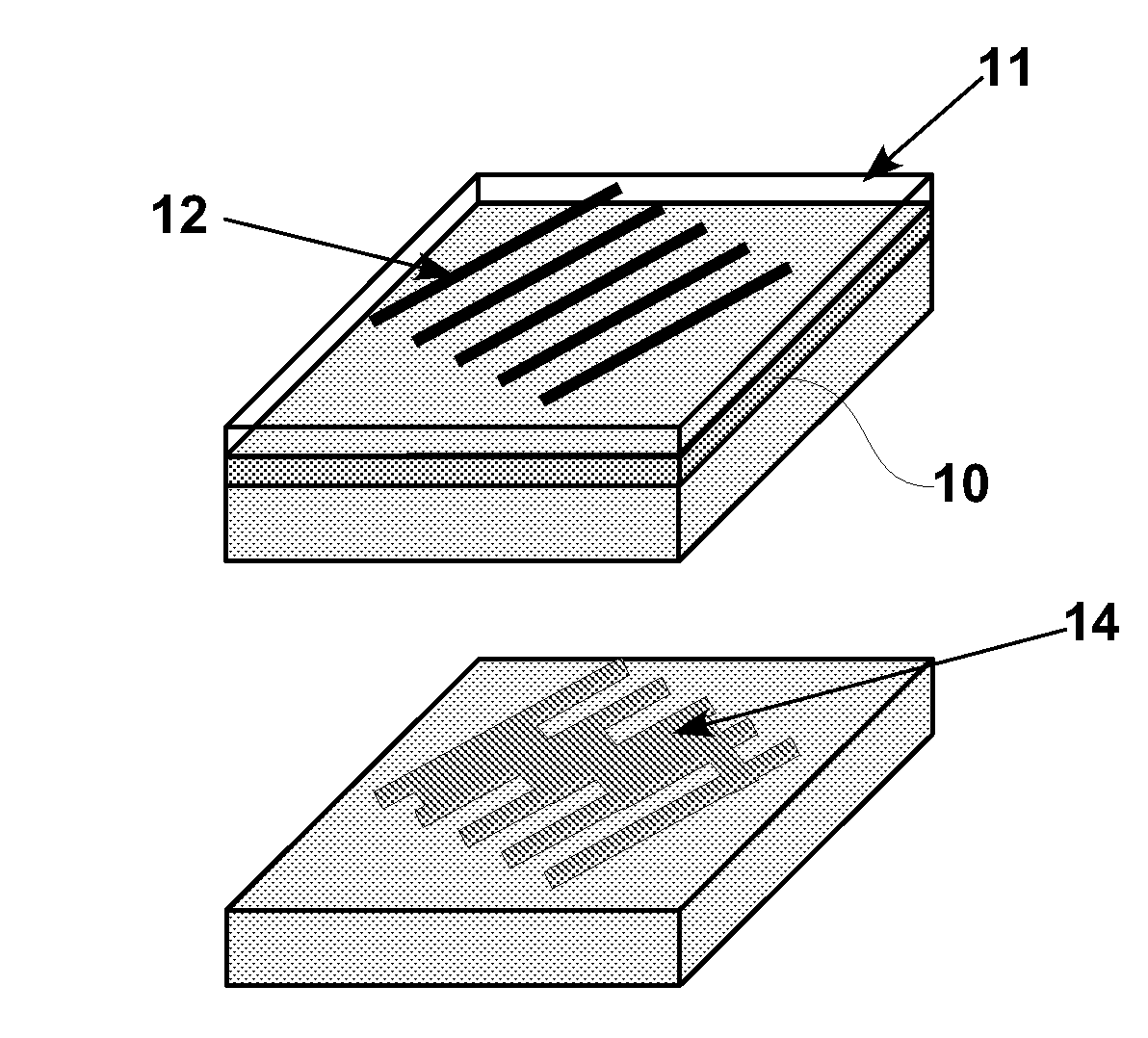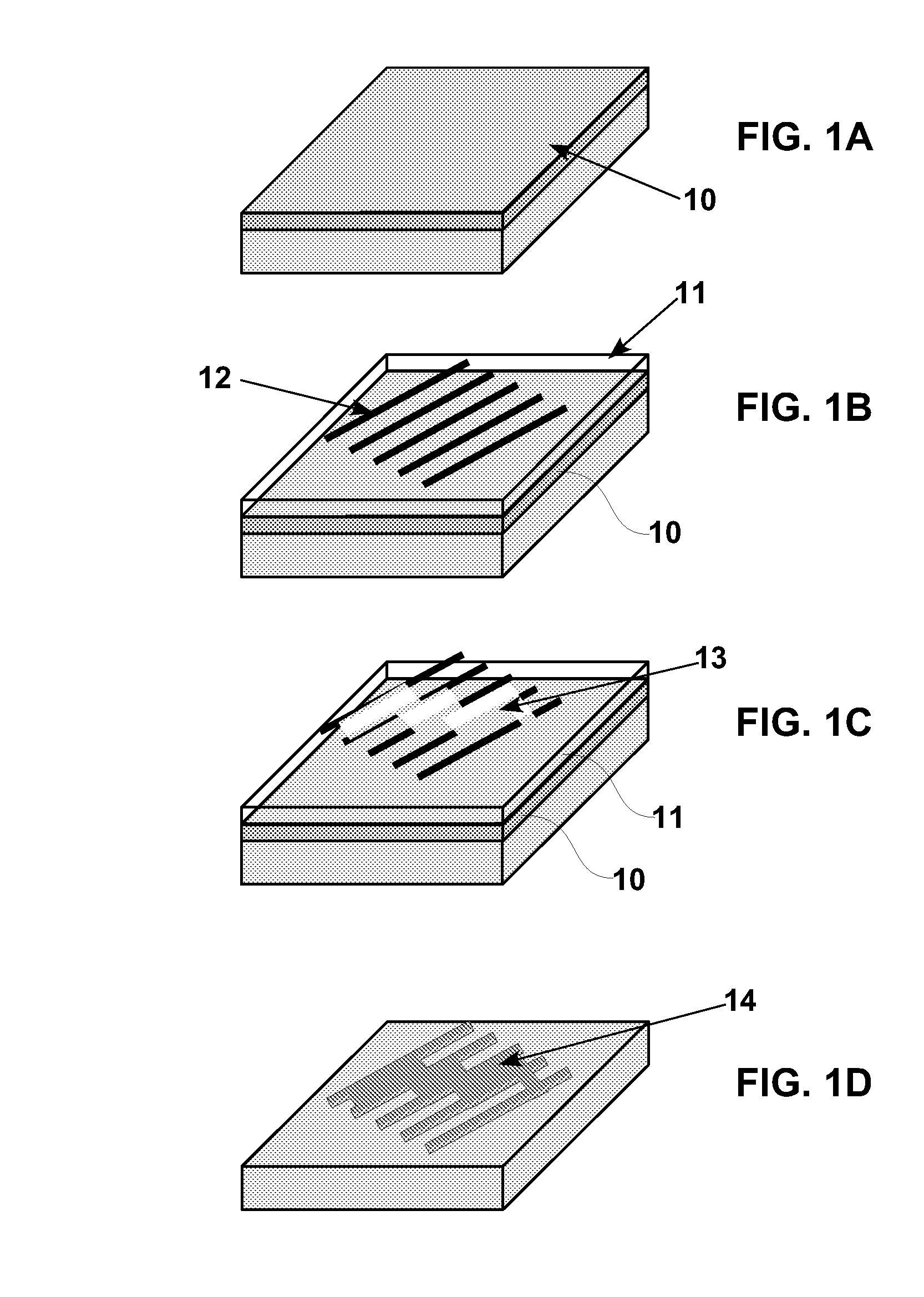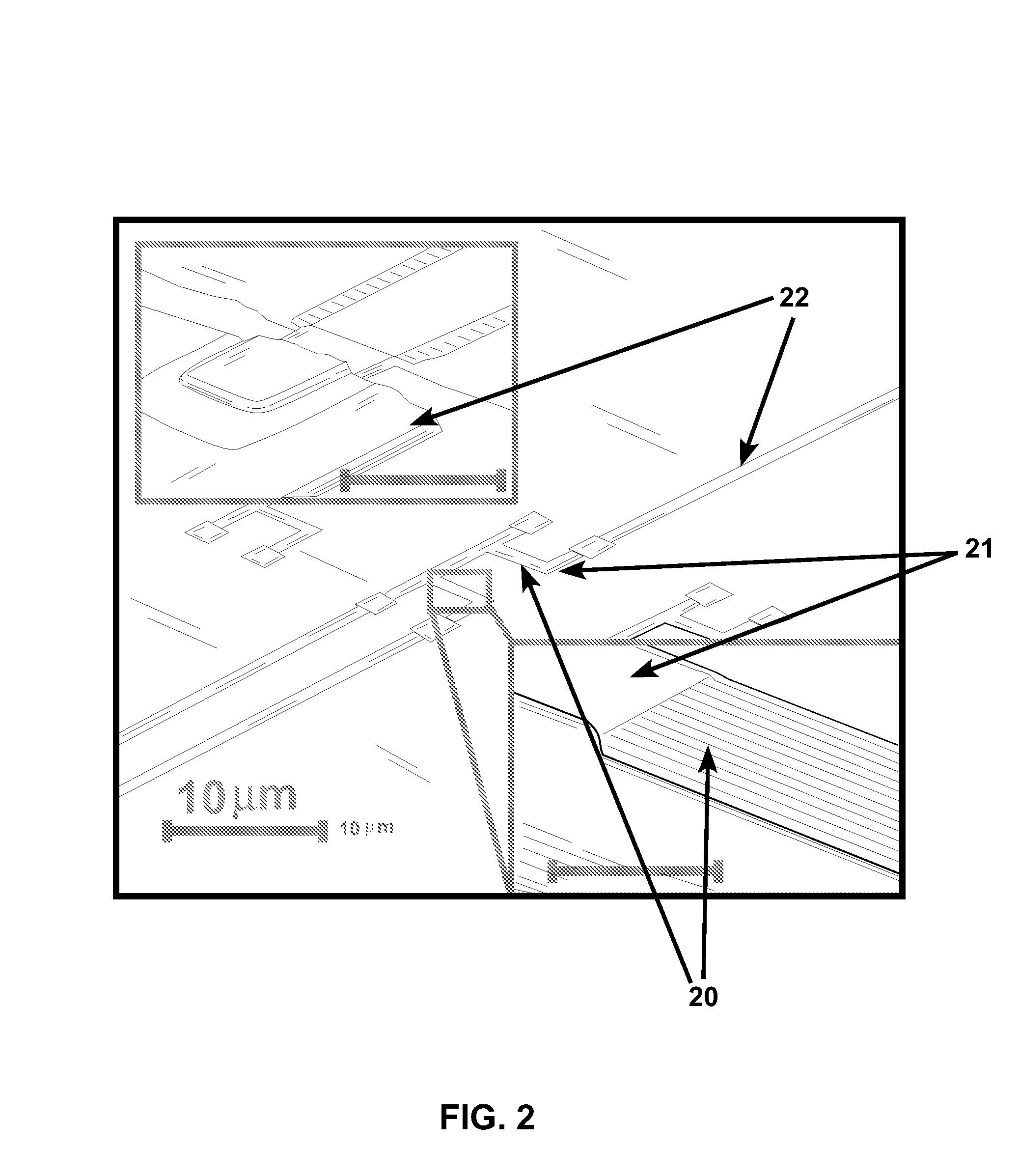Method for fabricating monolithic two-dimensional nanostructures
a nanostructure and monolithic technology, applied in nanotechnology, nanoinformatics, semiconductor devices, etc., can solve the problems of difficult to assemble nanowires into desired electrical circuit architectures, nanowires may not be easily accessible using conventional lithographic patterning methods, and nanowire use in electrical applications has several limitations. , to achieve the effect of good gate switching, poor gate modulation, and high quality
- Summary
- Abstract
- Description
- Claims
- Application Information
AI Technical Summary
Benefits of technology
Problems solved by technology
Method used
Image
Examples
Embodiment Construction
[0059]Nanowire materials, which can exhibit unique and useful properties because of their small dimensions, can typically only be assembled or patterned to form periodic, simple structures. Such simple structures are often inappropriate, not optimal, or not useful for an application of interest. On the other hand, lithographic patterning may be utilized to produce arbitrarily complex patterns, as required by an application of interest. However, lithographic patterning does not resolve the same nanoscale dimensions and nanostructure packing densities that can be achieved using nanowire patterning or assembly methods. As described below, embodiments of the present disclosure provide for the fabrication of structures that can include nanowires with electrical contacts and arbitrarily complex signal routing and interconnect patterns. Embodiments of the present disclosure may also provide that all structures be fabricated from the same material, or even the same single crystal. Embodimen...
PUM
| Property | Measurement | Unit |
|---|---|---|
| width | aaaaa | aaaaa |
| angle | aaaaa | aaaaa |
| thick | aaaaa | aaaaa |
Abstract
Description
Claims
Application Information
 Login to View More
Login to View More - R&D
- Intellectual Property
- Life Sciences
- Materials
- Tech Scout
- Unparalleled Data Quality
- Higher Quality Content
- 60% Fewer Hallucinations
Browse by: Latest US Patents, China's latest patents, Technical Efficacy Thesaurus, Application Domain, Technology Topic, Popular Technical Reports.
© 2025 PatSnap. All rights reserved.Legal|Privacy policy|Modern Slavery Act Transparency Statement|Sitemap|About US| Contact US: help@patsnap.com



